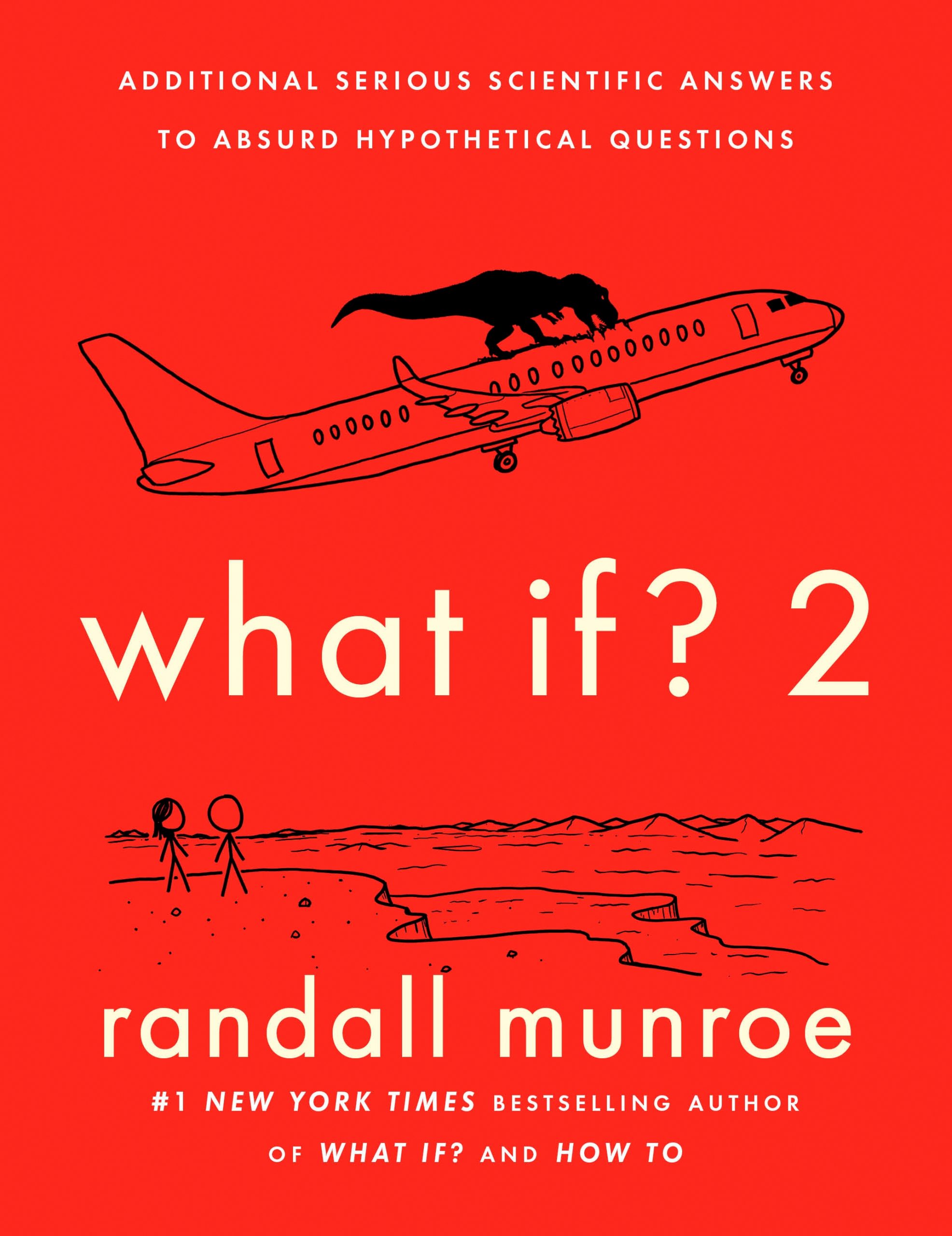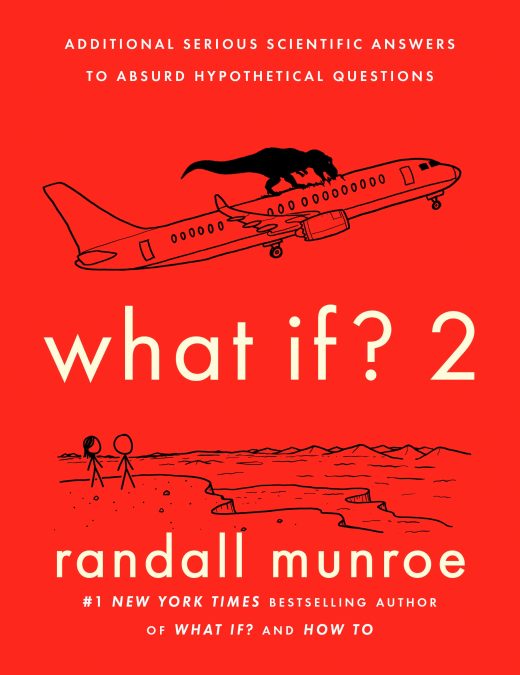Hitting the Books: What if ‘Up’ but pigeons?
Hitting the Books: What if ‘Up’ but pigeons?
Swallows carrying coconuts were only the beginning.

We all have those thoughts, the ones that come to us in the small hours of the night. Who am I? Why are we here? What if my cellphone ran on vacuum tubes instead? Randall Munroe has the answer to, well, only one of those questions, but also the answers to a whole bunch of others collected together into What If? 2: Additional Serious Scientific Answers to Absurd Hypothetical Questions. Yes, that is a T-Rex eating an airplane. In the excerpt below Munroe examines what it would take to haul an average sized human in a chair over Australia’s tallest skyscraper, using only the power of pigeons. Lots and lots of pigeons.
Excerpted from What If? 2 by Randall Munroe. Copyright © 2022 by Randall Munroe. Excerpted by permission of Riverhead, an imprint and division of Penguin Random House LLC, New York. All rights reserved. No part of this excerpt may be reproduced or reprinted without permission in writing from the publisher.
How many pigeons would it require in order to lift the average person and a launch chair to the height of Australia’s Q1 skyscraper?
In a 2013 study, researchers at the Nanjing University of Aeronautics and Astronautics led by Ting Ting Liu trained pigeons to fly up to a perch while wearing a weighted harness. They found that the average pigeon in their study could take off and fly upward while carrying 124 grams, about 25 percent of its body weight.
The researchers determined that the pigeons could fly better if the weights were slung below their bodies, rather than on their backs, so you would probably want pigeons to lift your chair from above rather than support it from below.
Let’s suppose your chair and harnesses weigh 5 kilograms and you weigh 65 kilograms. If you used the pigeons from the 2013 study, it would take a flock of about 600 of them to lift your chair and fly upward with it.
Unfortunately, flying with a load is a lot of work. The pigeons in the 2013 study were able to carry a load 1.4 meters upward to a perch, but they probably wouldn’t have been able to fly too much higher than that. Even unencumbered pigeons can only maintain strenuous vertical flight for a few seconds. One 1965 study measured a climb rate of 2.5 m/s for unencumbered pigeons,* so even if we’re being optimistic, it seems unlikely that pigeons could lift your chair more than 5 meters.†
No problem, you might think. If 600 pigeons can lift you the first 5 meters, then you just need to bring another 600 along with you, like the second stage of a rocket, to carry you the next 5 meters when the first flock gets tired. You can bring another 600 for the 5 meters after that and so on. The Q1 is 322 meters high, so about 40,000 pigeons should be able to get you to the top, right?
No. There’s a problem with this idea.
Since a pigeon can carry only a quarter of its body weight, it takes four flying pigeons to carry one resting pigeon. That means each “stage” will need at least four times as many pigeons as the one above it. Lifting one person may only take 600 pigeons, but lifting one person and 600 resting pigeons would take another 3,000 pigeons.
This exponential growth means that a 9-stage vehicle, able to lift you 45 meters, would need almost 300 million pigeons, roughly equal to the entire global population. Reaching the halfway point would require 1.6 × 1025 pigeons, which would weigh about 8 × 1024 kilograms—more than the Earth itself. At that point, the pigeons wouldn’t be pulled down by the Earth’s gravity—the Earth would be pulled up by the pigeons’ gravity.
The full 65-stage craft to reach the top of the Q1 would weigh 3.5 × 1046 kilograms. That’s not just more pigeons than there are on Earth, it’s more mass than there is in the galaxy.
You could make things more efficient by reusing pigeons. In the 2013 study, the researchers gave the pigeons 30 seconds to rest on the perch before bringing them down for another trial. If each “stage” is two seconds, and pigeons are refreshed after 30 seconds, you could fly arbitrarily high with a 15-stage craft—but that would still require trillions of pigeons.
A better approach might be to avoid carrying the pigeons with you. After all, pigeons can get up to the top of the skyscraper themselves, so you might as well send them ahead to wait for you there instead of having their friends carry them up with you. If you could train them well enough, you could have them glide along at the appropriate height, then grab you and tug you upward for a few seconds when you reach their altitude. Keep in mind that pigeons can’t grab and carry things with their feet, so they’d need little harnesses with aircraft-carrier-style hooks to intercept you.
With this arrangement, it’s possible you could fly yourself to the top of the tower with just a few tens of thousands of well-trained pigeons. You should probably make sure you have some kind of safety system that will keep you from plunging to your demise every time a falcon flies by and spooks the pigeons.
The craft wouldn’t just be more dangerous than an elevator, it would also be a lot harder to pick your destination. You might plan to go to the top of the Q1, but once you take off… you’ll be completely under the control of anyone with a bag of seeds.

(9)


